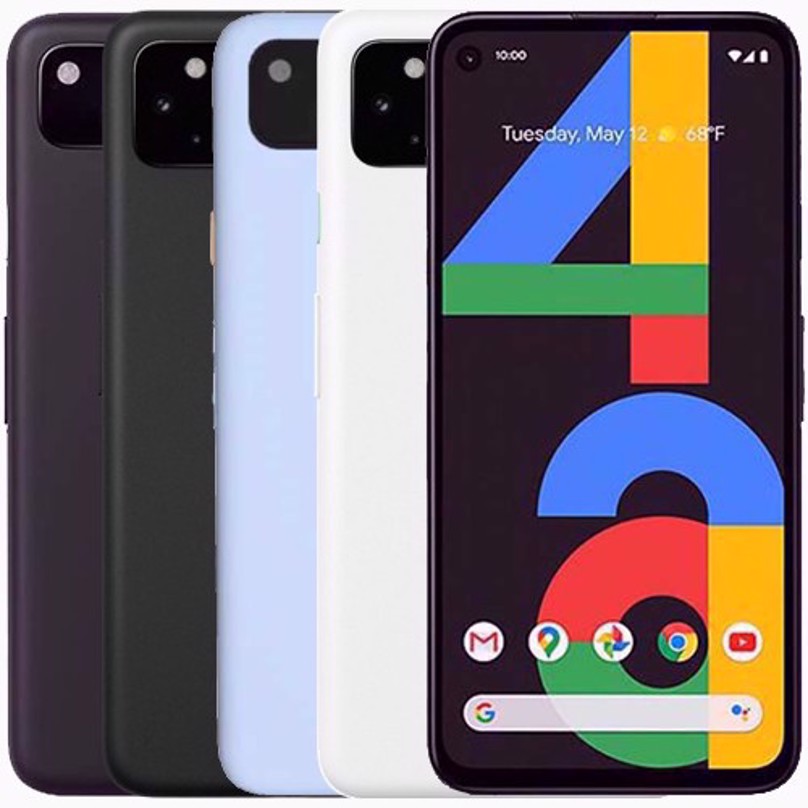
Overview:
The Google Pixel 4a (5G), unveiled in 2020, was a part of Google’s endeavor to bring 5G connectivity to its more affordable Pixel lineup. Positioned between the Pixel 4a and the Pixel 5, the Pixel 4a (5G) aimed to offer a blend of features from both devices, making it an attractive option for those wanting 5G capabilities without the flagship price.
Features:
- Operating System: Launched with Android 11, benefiting from direct and prompt updates from Google.
- Display: 6.2-inch OLED capacitive touchscreen with a resolution of 1080 x 2340 pixels.
- Processor: Qualcomm SDM765 Snapdragon 765G Octa-core.
- Memory: 6 GB RAM with 128 GB internal storage (non-expandable).
- Camera: Dual rear camera setup with a 12.2 MP primary sensor and a 16 MP ultrawide lens. An 8 MP front camera.
- Battery: 3885 mAh non-removable battery with fast charging capabilities.
- Connectivity: Wi-Fi 802.11 a/b/g/n/ac, Bluetooth 5.0, NFC, and 5G connectivity.
- Other Features: Rear-mounted fingerprint sensor, stereo speakers, and deep Google Assistant integration.
Pros:
- Value Proposition: The Pixel 4a (5G) offered a lot of the features of the Pixel 5, including the same primary camera and processor, but at a lower price point.
- 5G Connectivity: Ready for next-gen network speeds, making it future-proof for the coming years.
- Camera Capabilities: Retaining the Pixel series’ reputation for excellent photography, the device delivered impressive shots, especially given its price.
- Larger Display: The 6.2-inch display was appreciated by those who prefer larger screens for media consumption and browsing.
- Pure Android Experience: The device offered a bloat-free, stock Android experience with the promise of timely updates.
Cons:
- No Wireless Charging: Unlike the Pixel 5, the Pixel 4a (5G) lacked wireless charging capabilities.
- Build Material: Made of polycarbonate, it didn’t have the premium feel of some competitors.
- No Water Resistance: The device wasn’t IP-rated for water or dust resistance.
Comparisons to Other Technologies:
In 2020, with the rise of 5G and a focus on affordable yet powerful devices, the Google Pixel 4a (5G) faced competition from:
- OnePlus Nord: Offering a 90Hz display, multiple cameras, and a competitive price point.
- Samsung Galaxy A71 5G: Samsung’s mid-range 5G offering with a large display and versatile camera setup.
- iPhone SE (2nd generation): Apple’s budget-friendly offering, though lacking 5G, was known for its powerful A13 Bionic chip and compact design.
Launch Date:
The Google Pixel 4a (5G) was announced in September 2020 and released in November 2020.
Common Issues/Problems:
- Availability: Initially, the availability of the Pixel 4a (5G) was limited in certain regions, leading to some frustration among potential buyers.
- Speaker Quality: Some users reported inconsistencies in speaker quality, especially when comparing the top and bottom speakers.
- Battery Life Variability: While many found the battery life sufficient, some heavy users or those in areas with weak 5G signals reported faster battery drain.
Conclusion:
The Google Pixel 4a (5G) was a strategic device for Google, aiming to strike a balance between affordability and performance, especially in the realm of 5G connectivity. It successfully brought many of the beloved features of the Pixel series, particularly the camera capabilities, to a wider audience. While it made some compromises compared to the flagship Pixel 5, it was generally well-received for its value proposition and overall user experience.